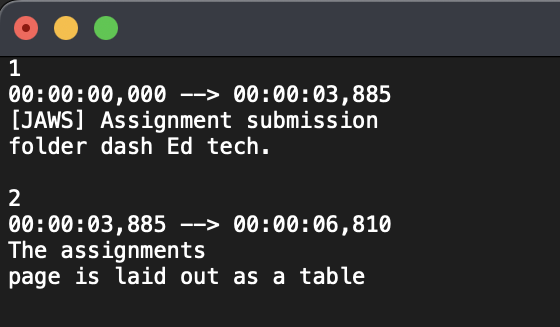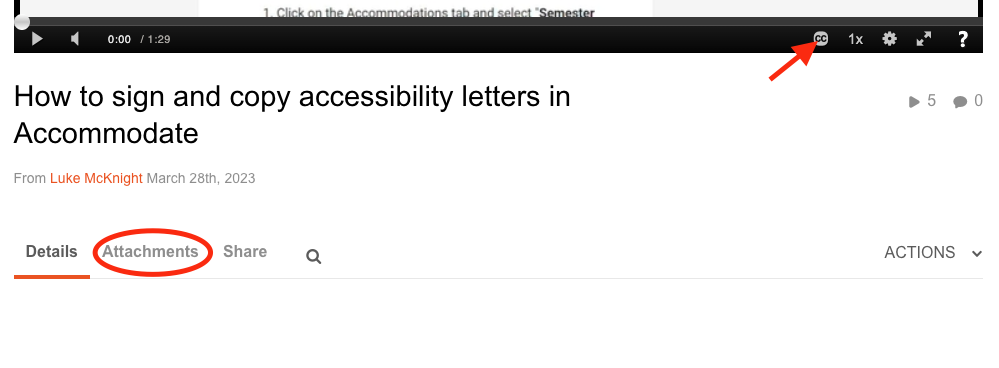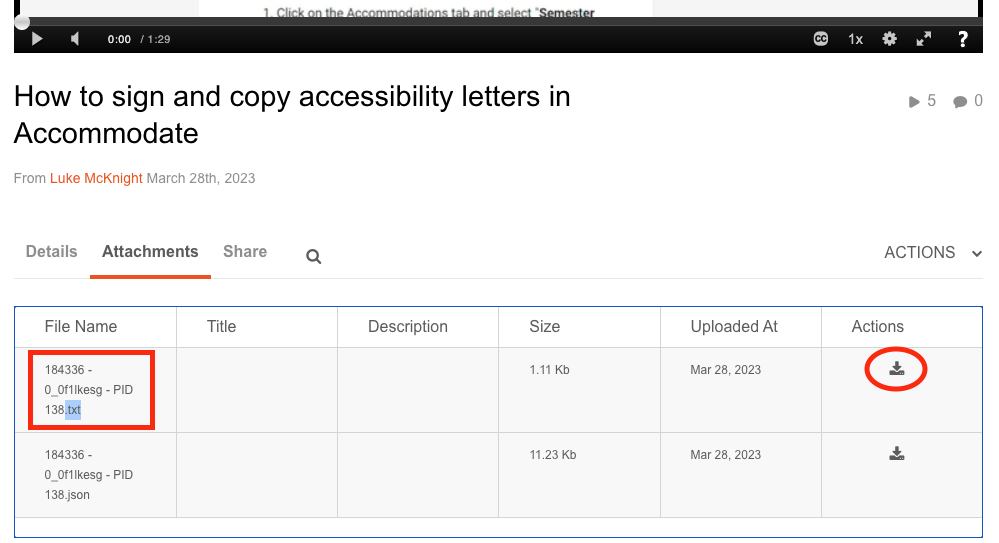Accessibility FAST
Captioning and Transcription Tools
On this page:
Captioning on Common Video Platforms
Find Captioned Videos on YouTube
Social Media
Instagram supports captions on Stories and IGTV.
Captions can be added to stories using a sticker.
IGTV captions must be turned on in settings.
TikTok offers support for automatic captioning.
Twitter offers support for adding .SRT files to videos.
Facebook supports adding captions to Facebook video.
Creating Caption Files
Caption files can be created using a text editor (like Notepad for Windows or TextEdit on MacOS) to create or edit .SRT files (.SRT and .VTT are the most common file formats for subtitles).
How to:
Here is an example of the proper formatting of an .SRT file in TextEdit:

Consider this guide for manually creating and editing .SRT files.
Use HappyScribe’s convert SRT to VTT tool or 3Play Media’s caption converter tool if you need a different file format.
For instructions to upload caption files, consult the platform guides earlier in this chapter.
Transcripts
Transcripts are a text document containing all the audio content in media, including videos, podcasts, and audio recordings. Transcripts may also include additional information regarding visual elements and actions such as descriptions of what is on screen. Unlike captions, transcripts are not timestamped or synced with the media. A transcript is particularly useful to text to speech and screen reader users because many users set their software to read at a rate much faster than natural human speech. Transcripts can also be searched for words, names, and terminology.
Use Kaltura to generate a transcript of audio or video:
- Upload media to Kaltura
- Edit machine-generated captions
- Navigate to media
- Select Attachments

- Choose the Download icon for the .txt file attached to the video

- The .txt file downloaded will be a text equivalent of the closed captions but without timestamps.
OneDrive
If you generate transcripts using OneDrive, follow the instructions earlier in this chapter to create captions. Then, download the generated .VTT and use Microsoft VTT Cleaner to remove timestamps and other code.
Other Captioning and Transcription Tools
Use Word to transcribe either by recording directly in Word or uploading an audio file.
Transcribe audio to text using Dragon Naturally Speaking.
Audapolis is an open source transcript editor that automatically transcribes audio to text.
Mac OS supports dictation that could be used to develop a transcript.
Google Docs allows dictation that could be used to write a transcript.
Google Chrome now offers live captioning on any video. This feature does not absolve content creators/providers from adding captions to video content, however, if encountering a video without captions on the wild web, this feature can be invaluable. This tool relies on the built-in captioning settings on your computer. To view or change these settings:
Transcription is the process of converting audio into written text. A transcript is a written record of all audio in media. Captions are synced to the content.

